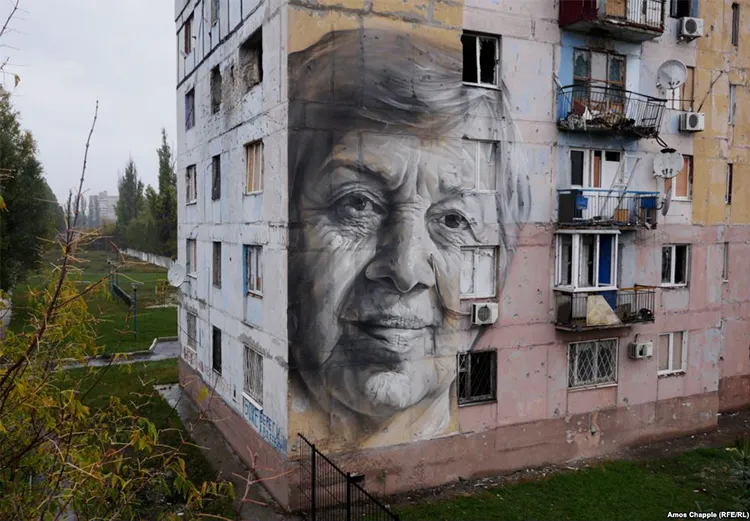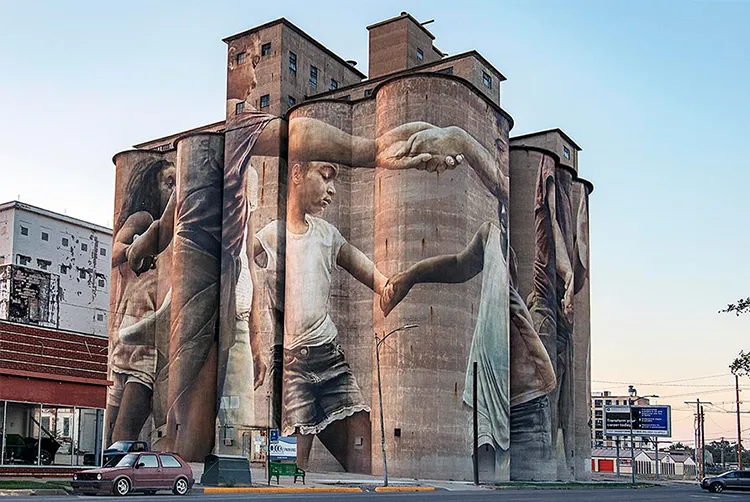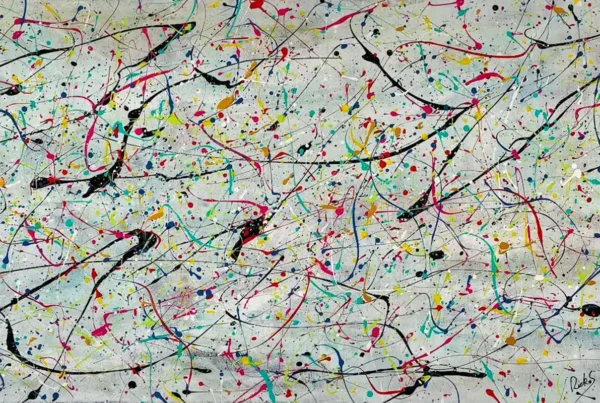An Artist’s Evolution: From Graffiti to Global Muralism
Growing up in Melbourne, Guido van Helten found his initial artistic voice through graffiti, a medium known for its rawness, public accessibility, and rebellious spirit. His journey into the broader street art community included participating in events like The Brisbane Street Art Festival (BSAF), which provided him with a platform to showcase his evolving style and connect with other artists. As a young artist, van Helten gravitated toward graffiti for its immediacy and its ability to engage with the urban landscape on a large scale. This early experience shaped his understanding of space and architecture, allowing him to explore how art could interact with its environment., a medium known for its rawness, public accessibility, and rebellious spirit. As a young artist, van Helten gravitated toward graffiti for its immediacy and its ability to engage with the urban landscape on a large scale. This early experience shaped his understanding of space and architecture, allowing him to explore how art could interact with its environment. However, as he grew artistically, van Helten’s interests began to evolve beyond the rebellious energy of graffiti. He sought a deeper connection between his work and the people who surrounded it. This drive to explore more profound narratives within his art led him to muralism, a shift that would eventually define his unique approach to public art.
His transition into muralism was influenced by his academic background in visual arts at Southern Cross University, where he developed skills in printmaking. This discipline introduced him to the concept of layering and structure, techniques that would later become essential in his mural work. As his practice matured, travel and photography became central components of his artistic process. These new tools enabled him to engage with different cultures and communities, allowing his art to move beyond mere aesthetics and reflect the identities and stories of the people it represented.

Guido van Helten: Crafting Murals as Cultural Reflections
A key aspect of van Helten’s muralism is his commitment to creating site-specific works that honor the histories and cultures of the communities they inhabit. His process begins long before he picks up a brush, immersing himself in the local context by meeting residents, visiting historical landmarks, and delving into the area’s narratives. Photography plays an essential role in this phase. Van Helten captures numerous images during his research, not merely for their visual appeal but for the emotions and histories they represent. Through this method, he ensures that each mural he creates becomes a genuine reflection of the community’s spirit.
One of his most recognized projects, the Brim Silo Art Project in Victoria, Australia, exemplifies this approach. The large-scale mural, which portrays four anonymous figures, captures the resilience and strength of the rural community. The Brim project was a significant turning point for van Helten, as it resonated deeply with both the town and the broader public. This mural was more than just an artwork; it became a source of pride for the community, highlighting the often-overlooked stories of rural Australia. For van Helten, creating such works is about more than beautifying public spaces—it’s about giving communities a voice and a sense of visibility.

The Global Reach of Van Helten’s Art
As Guido van Helten’s murals have spread across continents, from Australia to the United States and Europe, his dedication to cultural sensitivity remains unwavering. Each project begins with research, allowing him to approach each location with respect for its unique context. One example is his mural in Greenville, South Carolina, where he focused on highlighting the city’s historically Black communities. These neighborhoods, often marginalized in discussions about the city’s growth, were given a powerful platform through van Helten’s work. His mural became a visual reminder of the struggles and triumphs of these communities, ensuring that their history was not forgotten in the ongoing narrative of the city’s development.
Similarly, when he created a mural in Pforzheim, Germany, van Helten drew from the city’s rich but complex history. Known for its jewelry-making tradition, Pforzheim—dubbed “Goldstadt” or Gold City—also bore the scars of devastating bombing during World War II. Van Helten spent weeks connecting with locals, absorbing their stories, and visiting places that commemorated the city’s tragic past. His mural reflected both the beauty of the city’s artisanal legacy and the resilience of its people in the face of historical trauma. Through the use of golden hues, van Helten paid homage to Pforzheim’s jewelry heritage, while simultaneously invoking a sense of healing and remembrance.

Guido van Helten: Mastering Technique and Storytelling
Guido van Helten’s mastery of technique is as crucial to his work as his storytelling. Working on vast surfaces like silos or the sides of multi-story buildings requires both technical precision and artistic intuition. Van Helten often relies on a grid system to scale his photographic references onto these large canvases, ensuring accuracy in proportion and detail. However, his experience in printmaking adds a unique element to his work, as he employs layering techniques to build depth and realism. Each mural begins with a foundation of brushwork, followed by airless spraying and HVLP (high-volume, low-pressure) spraying, which allow him to create smooth transitions and translucent layers, much like watercolor painting. This meticulous process enables van Helten to achieve his signature photorealistic style, even when working on surfaces that span 15 meters or more in height.
The materials van Helten chooses are equally important. For his large-scale works, he uses KEIM paints, known for their durability and ability to bond with various surfaces. This ensures that his murals not only withstand the elements but also maintain their vibrancy over time. His technique of layering translucent color, combined with these high-quality materials, allows him to create murals that are both visually striking and long-lasting.
Beyond technical prowess, van Helten’s murals are powerful narratives that blend personal stories with collective history. A recent project in Bari, Italy, commissioned by the Southern Adriatic Sea Port Authority, is a testament to his ability to handle complex historical themes. The mural commemorated the arrival of the Vlora, a ship carrying thousands of Albanian refugees to Italy in 1991. Van Helten spent considerable time interviewing dock workers and locals who had witnessed this pivotal moment. His mural reflects the humanity and hope of the refugees, as well as the profound impact of their arrival on the community. For van Helten, the true power of muralism lies in its ability to forge connections between the past and the present, between the artwork and the people who encounter it.
Through his murals, Guido van Helten invites viewers to engage with the stories of the communities around them, creating artworks that are not just visually compelling, but rich with meaning and history. Each mural stands as a testament to the power of public art to bridge cultures, elevate voices, and celebrate shared human experiences.
For a deeper understanding of Guido van Helten’s artistic philosophy and techniques, consider exploring his in-depth interview with KEIM, where he discusses his creative process and the inspirations behind his remarkable murals.






